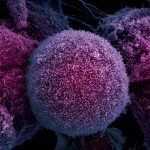Link to Pubmed [PMID] – 18346777
Mech. Ageing Dev. 2008 Jul-Aug;129(7-8):416-24
Aging is a pleiotropic and stochastic process influenced by both genetics and environment. As a result the fundamental underlying causes of aging are controversial and likely diverse. Genome maintenance and in particular the repair of DNA damage is critical to ensure longevity needed for reproduction and as a consequence imperfections or defects in maintaining the genome may contribute to aging. There are many forms of DNA damage with double-strand breaks (DSBs) being the most toxic. Here we discuss DNA DSBs as a potential causative factor for aging including factors that generate DNA DSBs, pathways that repair DNA DSBs, consequences of faulty or failed DSB repair and how these consequences may lead to age-dependent decline in fitness. At the end we compare mouse models of premature aging that are defective for repairing either DSBs or UV light-induced lesions. Based on these comparisons we believe the basic mechanisms responsible for their aging phenotypes are fundamentally different demonstrating the complex and pleiotropic nature of this process.

